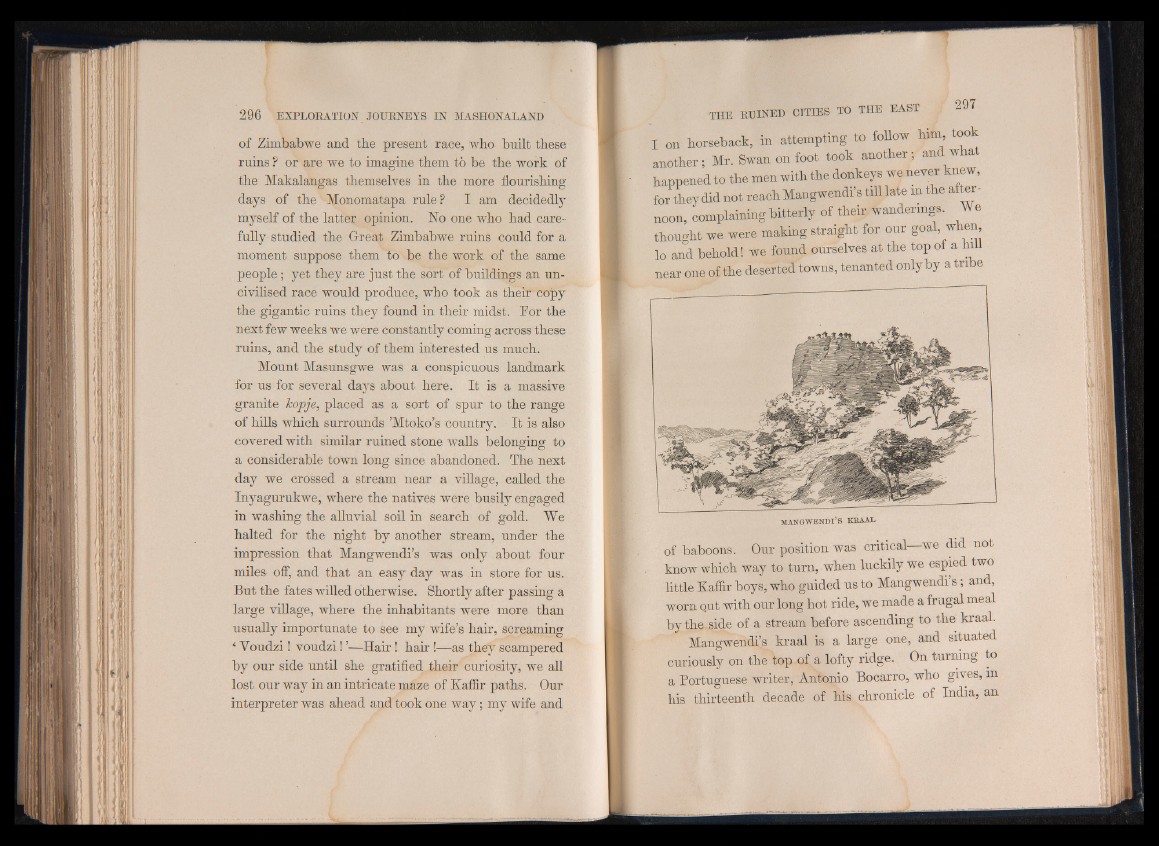
of Zimbabwe and the present race, who built these
ruins ? or are we to imagine them to be the work of
the Makalangas themselves in the more flourishing
days of the Monomatapa rule P I am decidedly
myself of the latter opinion. No one who had carefully
studied the Great Zimbabwe ruins could for a
moment suppose them to be the work of the same
people; yet they are just the sort of buildings an uncivilised
race would produce, who took as their copy
the gigantic ruins they found in their midst. For the
next few weeks we were constantly coming across these
ruins, and the study of them interested us much.
Mount Masunsgwe was a conspicuous landmark
for us for several days about here. It is a massive
granite kopje, placed as a sort of spur to the range
of hills which surrounds ’Mtoko’s country. It is also
covered with similar ruined stone walls belonging to
a considerable town long since abandoned. The next
day we crossed a stream near a village, called the
Inyagurukwe, where the natives were busily engaged
in washing the alluvial soil in search of gold. We
halted for the night by another stream, under the
impression that Mangwendi’s was only about four
miles off, and that an easy day was in store for us.
But the fates willed otherwise. Shortly after passing a
large village, where the inhabitants were more than
usually importunate to see my wife’s hair, screaming
i Youdzi! voudzi! ’—Hair! h a ir!—as they scampered
by our side until she gratified their curiosity, we all
lost our way in an intricate maze of Kaffir paths. Our
interpreter was ahead and took one way; my wife and
I on horseback, in attempting to follow him, took
another; Mr. Swan on foot took another; and what
happened to the men with the donkeys we never knew,
for they did not reach Mangwendi’s till late m the after
noon, complaining bitterly of their wanderings. We
thought we were making straight for our goal, when
lo and behold! we found ourselves at the top of a hill
near one of the deserted towns, tenanted only by a tribe
M A N GW EN D l’S KRAAL
of baboons. Our position was critical—we did not
know which way to turn, when luckily we espied two
little Kaffir boys, who guided us to Mangwendi s ; and,
worn Qut with our long hot ride, we made a frugal meal
by the, side of a stream before ascending to the kraal.
Mangwendi’s kraal is a large one, and situated
curiously on the top of , a lofty ridge. On turning to
a Portuguese writer, Antonio Bocarro, who gives, in
his thirteenth decade of his chronicle of India, an